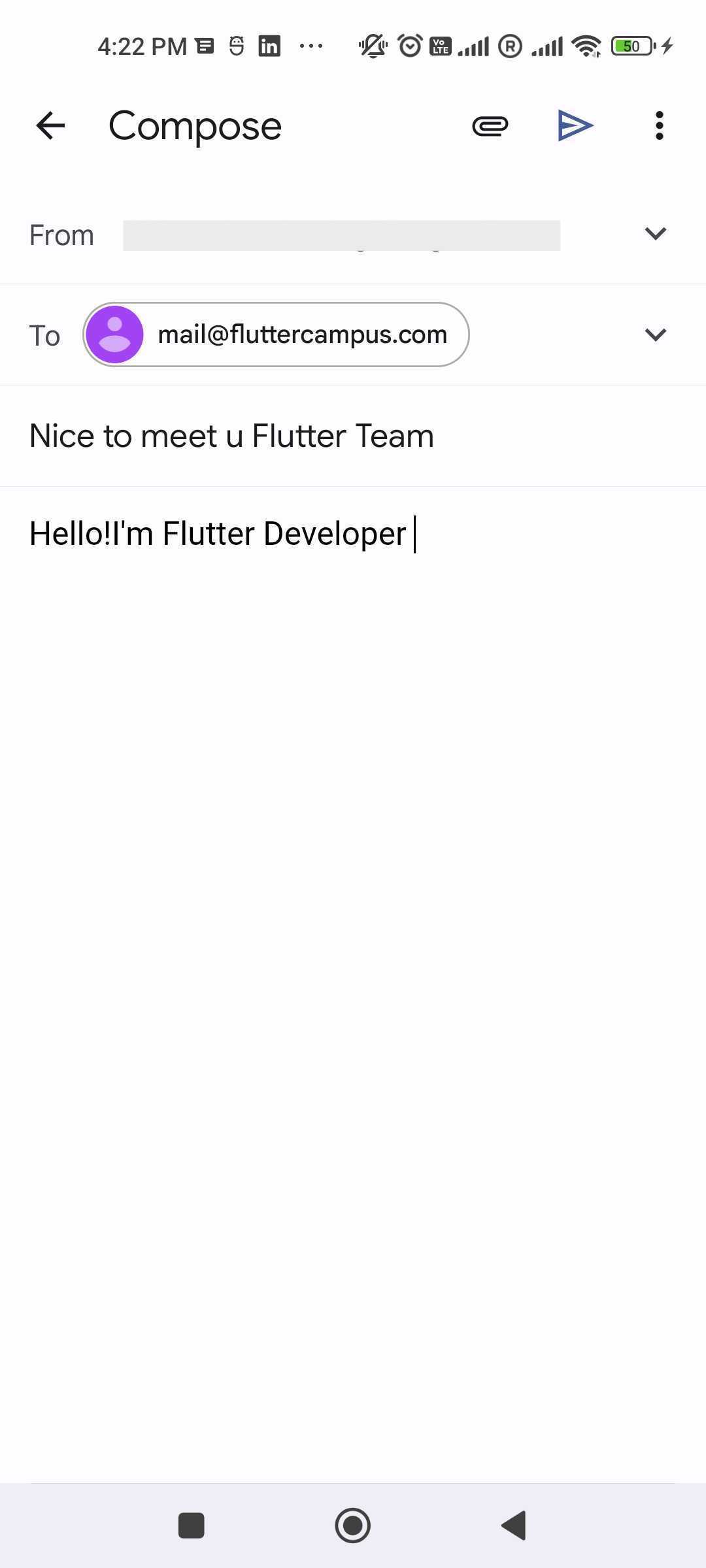アプリ関連ニュース
- 2022年10月25日
- 技術情報
Five most used PHP Testing frameworks
Today, I would like to share about some popular PHP testing frameworks.
There are many automated testing frameworks in PHP. Among them, I will list down 5 most used frameworks. Let’s take a look.
1. PHPUnit
2. PHPSPec
3. StoryPlayer
4. Codeception
5. Behat
You can check by clicking each list item for more details.
This is all for now. Hope you enjoy that.
By Asahi
waithaw at 2022年10月25日 10:00:00
- 2022年10月21日
- 技術情報
Flutterでアドレス、件名、本文のあるメールアプリケーションを開く方法

今回は自分のメールアプリをFlutterの方から開く方法を紹介します。
まずは、pubspec.yamlで開く必要があるpackageを追加します。
url_launcher: ^6.1.5アドレス、件名、本文を指定してメールアプリを開く方法
String email = Uri.encodeComponent("mail@fluttercampus.com");
String subject = Uri.encodeComponent("Nice to meet u Flutter Team");
String body = Uri.encodeComponent("Hello!I'm Flutter Developer");
Uri mail = Uri.parse("mailto:$email?subject=$subject&body=$body");
if (await launchUrl(mail)) {
}else{
}ボタンをタップする時、上記のことをコールます。
ElevatedButton(
onPressed: ()async{
//上記のことをコール
},
child: Text("今すぐメールを送る")
);asahi at 2022年10月21日 10:00:00
- 2022年10月20日
- 技術情報
Emmetの使用(3)
nishida at 2022年10月20日 10:00:00
- 2022年10月18日
- 技術情報
A useful library for automating emails in Node JS
Today I would like to share about a library that can be used for handling email automation with Node JS. Let’s take a look.
This useful library is Candymail. Candymail is an open-source NPM library. It can trigger and send multiple email sequences with a single JSON file. This library is very easy to use and flexible for handling email processes.
You can check it out here for more details. There is also github repo.
Hope you enjoy that for today.
By Asahi
waithaw at 2022年10月18日 10:00:00
- 2022年10月17日
- 技術情報
WebdriverIO
WebdriverIO is an open source test automation framework written in JavaScript and running on NodeJS. This is especially useful when testing his web apps and native mobile apps for iOS devices. It supports both behavior-driven development (BDD) and test-driven development (TDD), making it a highly preferred choice for automation testers.

WebdriverIO is based on NodeJS, an implementation of the JSON Wire protocol. It communicates using NodeJS, packaged on npm, open source and widely used for app development. Run automated tests using RESTful architecture.
A user writes a test script in JavaScript using his WebdriverIO library. Service requests are sent as HTTP commands via NodeJS. It uses the JSON Wire protocol and the service module forwards the request to the browser.
Upon receiving the command, the browser performs the user’s action. This proves the functionality of the application.

A common reason to use WebdriverIO is to be able to test native mobile apps for iOS-enabled devices. It is very useful for QA because of its simple structure and the ability to write test scripts concisely.
WebdriverIO easily integrates with third-party test solution providers such as BrowserStack. This gives QA easy access to additional features such as recording tests, using real cloud devices and browsers, and test reports.
Yuuma
yuuma at 2022年10月17日 10:00:00